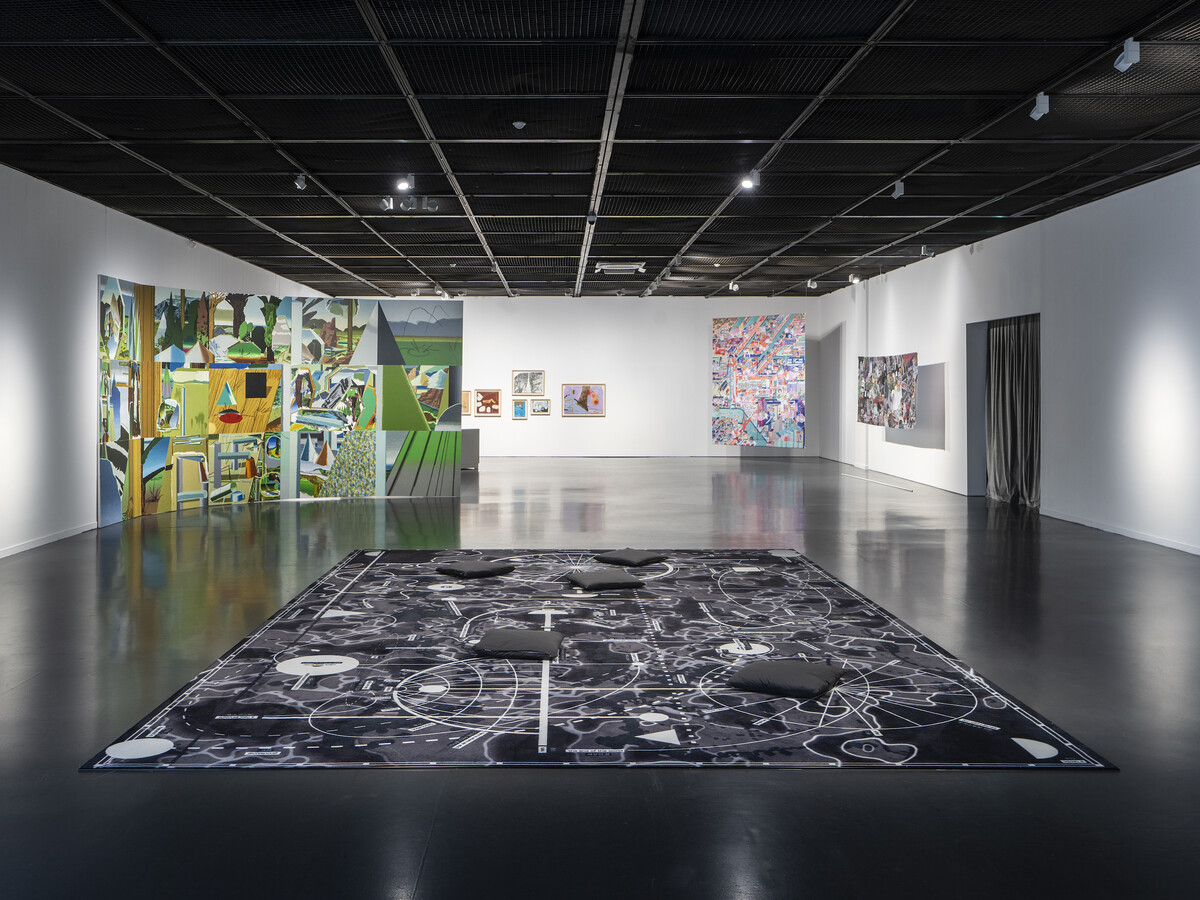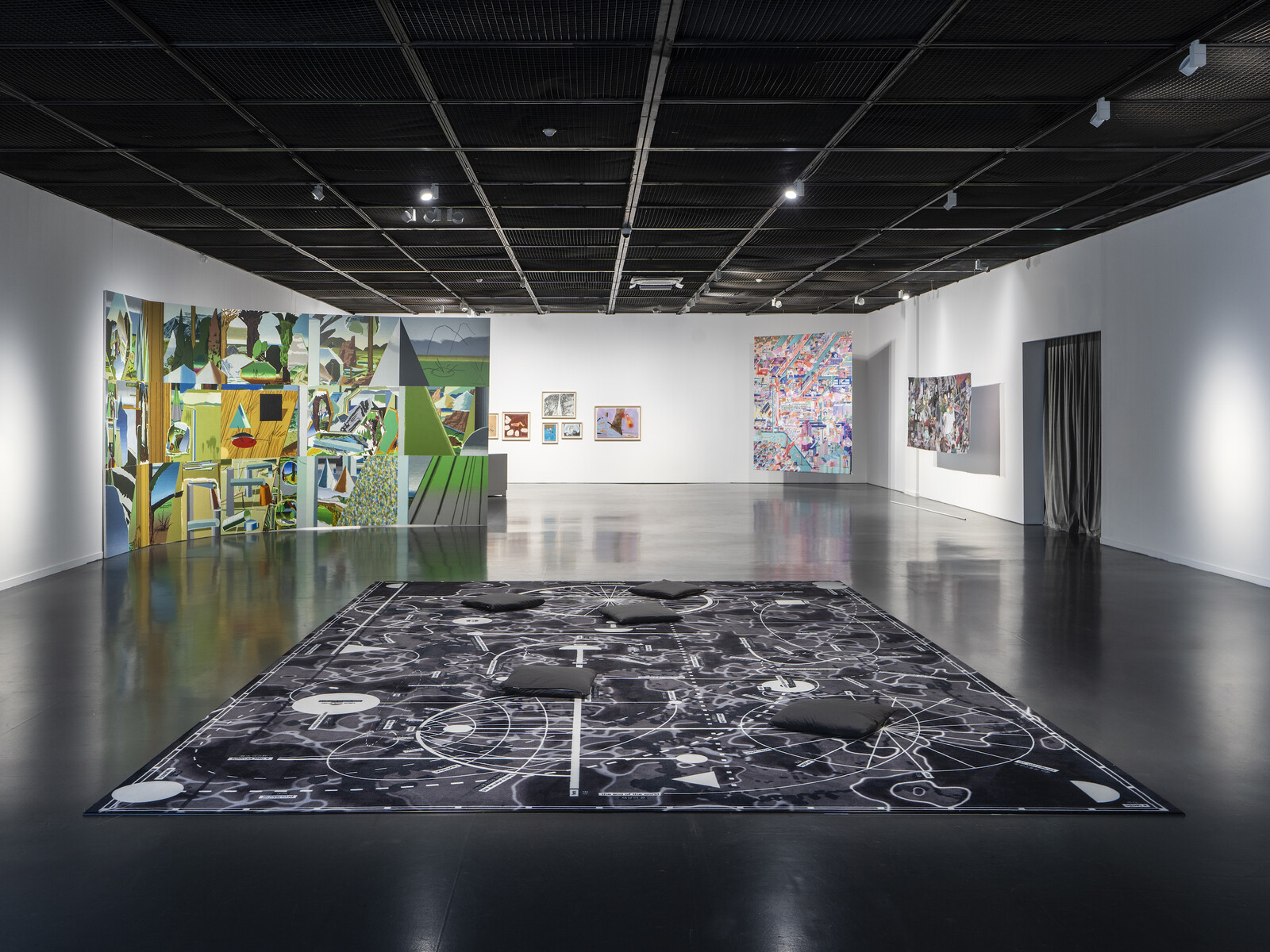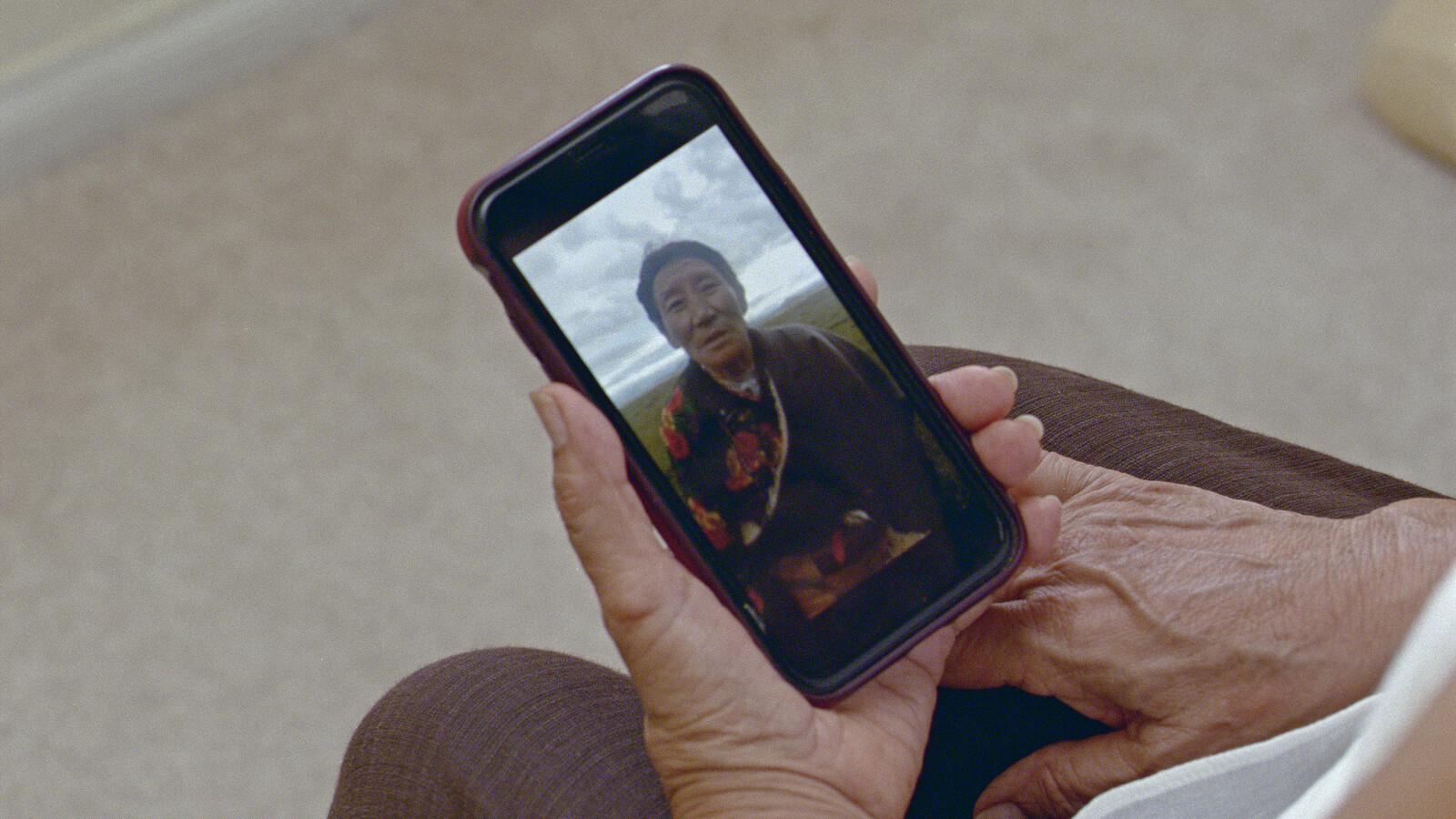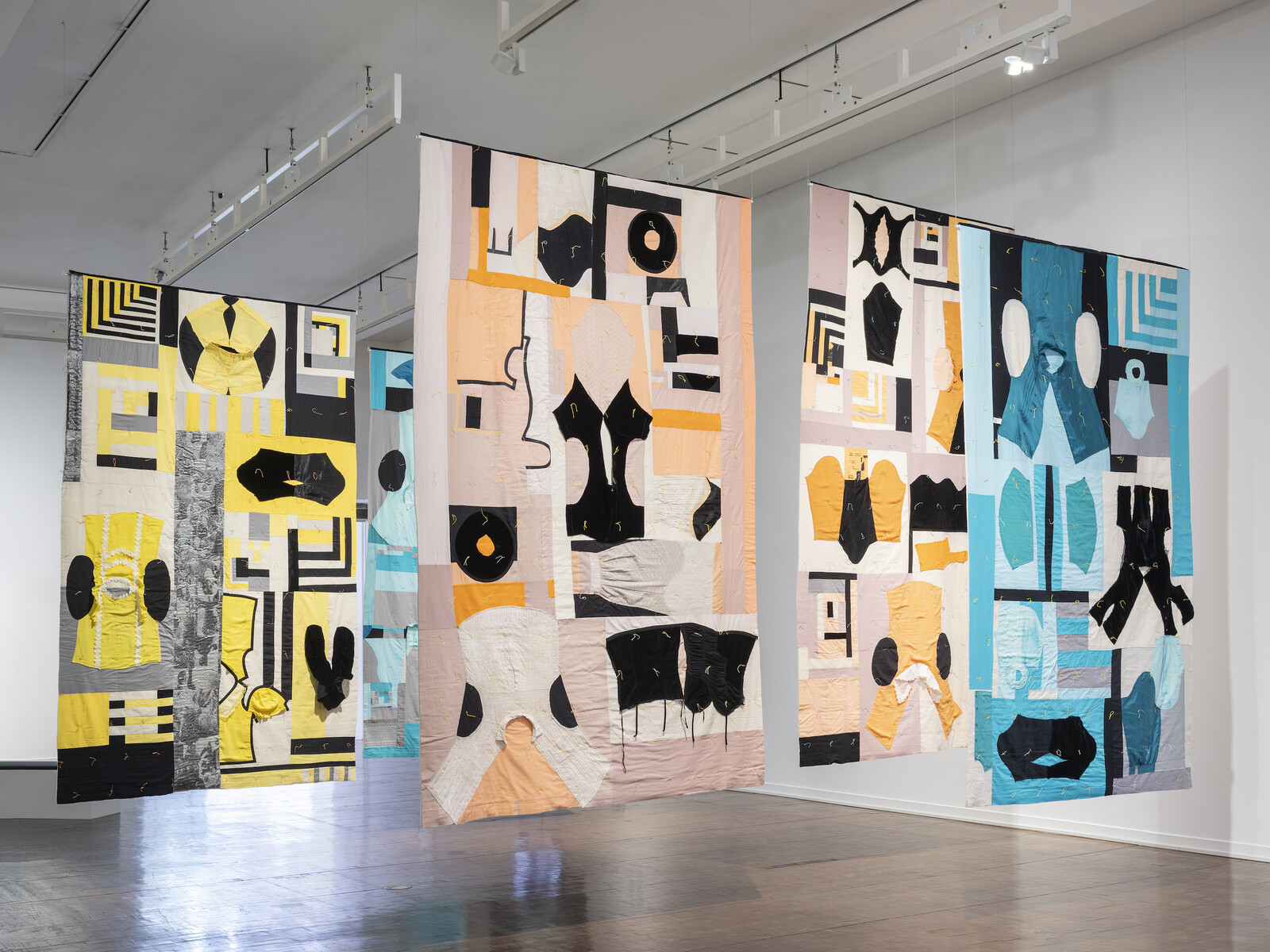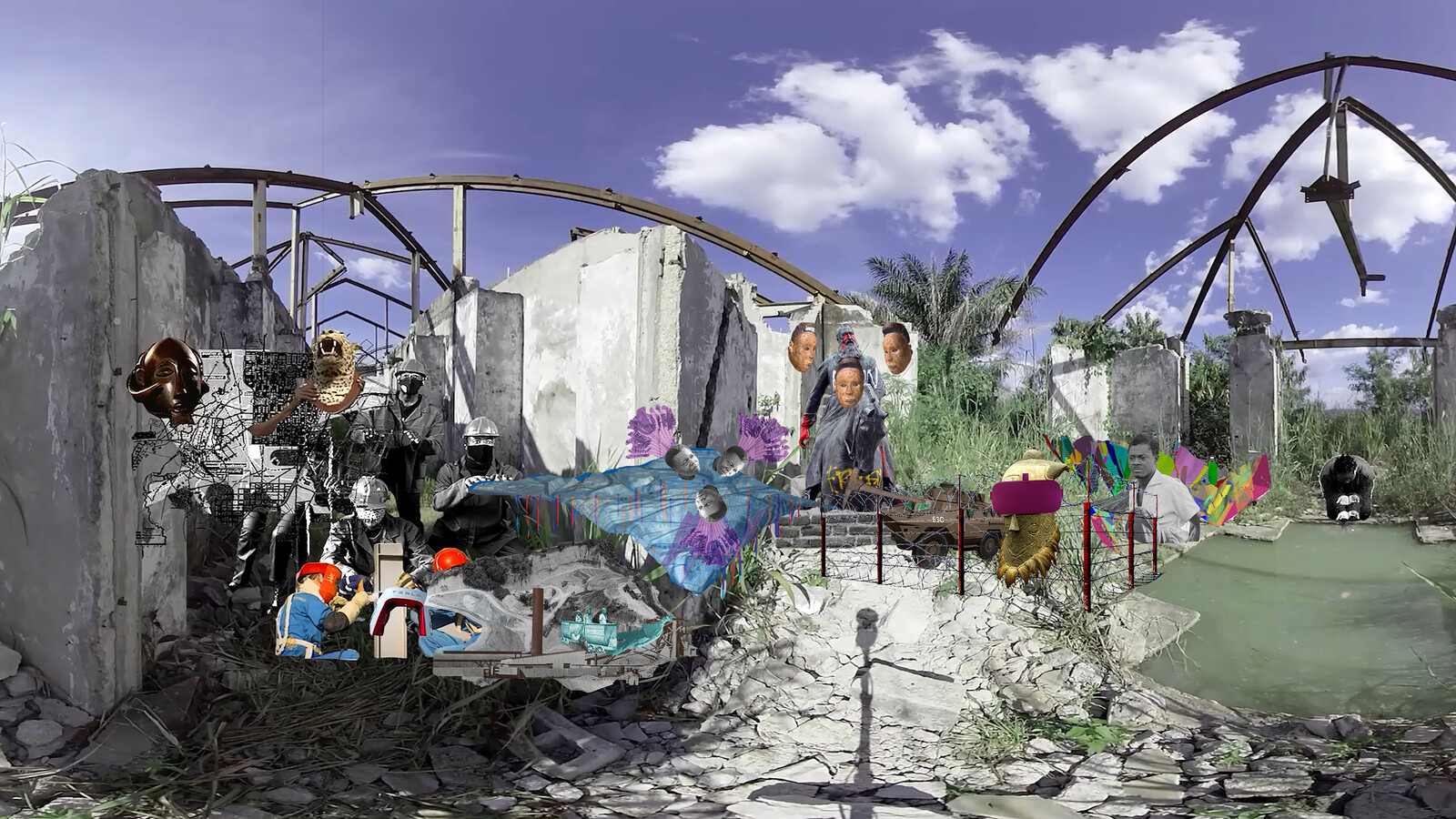“THIS TOO, IS A MAP” questions the conventional relationship of map to territory, looking “to model multi-spatial and multi-subjective histories and knowledge.” Directed by Rachael Rakes with associate curator Sofia Dourron, the show features works by sixty-five artists chosen not as representatives of particular nations but for their embrace of transnational approaches. The diasporic bent of this list reflects an expansion of (and alternative approach to) cartography to articulate myriad overlapping personal roots and routes.
One example is Tibetan-American artist Tenzin Phuntsog, whose video Pure Land (2022) attempts to trace landscapes across the American West that look similar to images of a homeland he’s never visited. In the film, he messages these images to his mother to comment on or verify their similitude. In the construction of these unknown nostalgic landscapes, the images Phuntsog takes are uncannily similar to their Tibetan counterparts. The comparison highlights the possibility that any space can be made into a home. At the same time, it floats subtle questions of what defines any given place.
What lies underneath a landscape was the focus of one of the more unique venues of the biennale: an emergency bunker built for the former military dictator Park Chung Hee in case he needed to vacate the adjacent parade grounds, where rallies were held during his regime. (Other key venues include the city’s museums of art and history, and smaller venues such as independent galleries Space mm and Sogong Space.) The SeMA Bunker, rediscovered in 2005 during nearby infrastructure construction, retained its mid-century “dictatorial design” in the form of bulky faux cheetah–skin sofas, and was since repurposed into an exhibition space by the city of Seoul. In keeping with its subterranean atmosphere, the work here focused on mining and other extractivist economies.
Sasha Litvintseva & Graeme Arnfield’s haunting film Asbestos (2016) explores the eponymous (since renamed) Quebec town where the toxic mineral was mined, as well as the visual history of the promotion of its use as insulation material and the elaborate biohazard infrastructure needed to remove it from homes. Across the bunker, South African duo Lo-Def Film Factory (Francois Knoetze and Amy Louise Wilson) created The Subterranean Imprint Archive (2021–23), composed of large wall-diagrams that detail the affective, spiritual, economic, and political web behind mining on the African continent and its effects. The potent setting of the former dictator’s bunker underscored the enormous political and economic force needed to displace communities, tear up the land, and expropriate its riches.
Seoul’s local government founded Mediacity in 2000 to foreground the city as a high-tech meeting place for technology, science, and art. One anachronistic aspect of the Mediacity biennale today is the need to grapple with what “media” means in what is arguably a “post-media” moment. Thankfully, Rakes—who for the first time in the biennale’s history was selected through an international open call process—has taken a materialist approach to expanding outdated definitions of media, unfolding through such works as Mercedes Azpilicueta’s large-scale, up-cycled patchwork hanging quilt series “Five Spells & A Song” (2023) and the mountainous piles of e-waste that support the afrofuturist videos of Francois Knoetze’s Core Dump (2018–19). Choi Yun’s vibrant mashup of Korean pop-culture in the lurid Ryan Trecartin-esque video Where the Heart Goes_Night Walk (2023) masquerades alongside introspective and enigmatic installations of still-lifes entitled Bulletin Board (Rice and Pond) (2018–20). Despite this innovative approach to the biennale’s long-standing focus, it could be that thematic of media implied in the title has outlived its usefulness.
While the curators worked well in opening up the exhibition spaces in the Seoul Museum of Art to allow the institution to breathe, it is less clear how this interesting constellation of artists relate to the broader context of the city. The multitude of approaches to map-making in the exhibition succeeds in unpacking diverse approaches to the form in varied locations around the world. But in keeping with its ambitions to explore non-territorial forms of knowledge that exist outside of national borders, the show doesn’t provide much in the way of an in-depth reading of the terrain of Korea or East Asia more broadly. The exception is curator Jo-Lene Ong’s public program, which highlights a myriad of Malaysian artists who address the country’s different ethnicities, traditions, and modernities. Seoul is shaped by a culture born of intense proximities and colonial relationships with its neighbors, as well as the continued presence of the US military. At a time of global interest in Korean culture, biennales such as Mediacity have an opportunity—in this case overlooked in favor of a deterritorialized view—to challenge local preconceptions around history, tradition, and national narratives.
